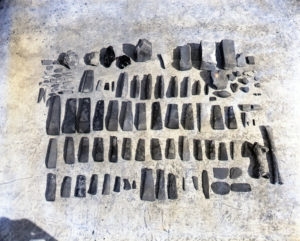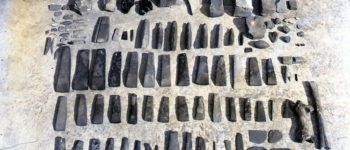1300s: Game of Stones
May 23, 2019
By AHNZ
 Otago University archaeologists have detected that our early stone age culture started off with better quality tools then stepped back to local retail grade rocks…
Otago University archaeologists have detected that our early stone age culture started off with better quality tools then stepped back to local retail grade rocks…
“They started to use inferior grade local materials … which wasn’t what I expected. We don’t know why … but they weren’t looking at importing adzes. They were still importing other materials. We’ll figure it out, though.”- ODT, 2017
I have a helpful suggestion! Perhaps it’s for the same reason that hospitals in New Zealand have also stopped importing expensive surgical-grade equipment? Instead they just buy approximations of what is needed needed over the counter at the local hardware store.
“The surgeon said a pair of surgical pliers to remove a wire through a bone can cost $1000. You can get the same thing for $30 from Mitre 10,” the surgeon said.
“DHBs have identified hundreds of non-surgical-grade items and removed them from operating theatres.”- Hardware store tools used in surgeries, NZ Herald
Mystery solved guys, you’re welcome.
Willetts Collection
The work is based on artefacts collected by the Willetts family, thousands of flakes, scrapers and other stone tools. The site, Waitaki River mouth, dates from the C13th making it Waitaha or Moa Hunter era New Zealand.
I’m not even kidding about the similarity between this stone age technology choke and that of our State health system. In both cases the people started off with quality equipment but then declined into junk. Why?
Central Government took over our clinics and hospitals and proceeded to run them into the ground. The state nationalised New Zealand’s pharmaceutical industry which just about destroyed it. The contracts for supply of equipment is now under State control rather than in an open, free, market. That means quality goes down and price goes. The priority is on making money for friends of whatever party is in power rather than patients (the proper clients.)
I’ll bet you the same thing happened in Stone Age Colonial New Zealand too. After an initial free trade era, some group must have put a strangle hold on the premium stone supply. They were probably based over on the West Coast where the best nephrite comes from. While trade in other goods went on as usual this Stone Kingdom placed monopolistic pricing on greenstone. By doing so, they made themselves powerful but also a target. Greenstone technology was, after all, the highest form known until Captain Cook appeared with metal nails.
It seems likely to me that there would be high competition to be in control of the Stone Kingdom. You get into a sort of Game of Stones situation where tribes vie for control of the stone. Like the planet Arrakis in Dune, or the Unobtanium in Avatar, or vibranium of Black Panther, the controller of the monopolised commodity becomes wealthy and supreme.
I think greenstone became a sort of artificially inflated currency which disrupted its everyday practical use. That’s why the Waitaki Moa Hunter people reverted back to the retail quality hardware. It may be the driving force for why waves of invaders kept coming to the South Island in the first place.
A way to test my speculations would be to find other stone collections from around New Zealand. Do they show the same quality decline? In the same time periods? Variations might indicate a given tribe being in or out of favour with whoever sat on this Stone Throne. An ultimate test would be to actually find the central hub of greenstone control. There may be some lost Stone Kingdom hidden in the bush somewhere waiting to be excavated. If there was a powerful group of people exerting monopolistic control over New Zealand we can expect to find the ruins of their version of The White House or Westminster or Karnak.
I bet University of Otago Archaeologists don’t earn degrees for coming up with ideas like these!
—
image ref. Shannon Gillies; ODT
image ref. Ian Smith; Waitaki District Archive; RNZ
 Like Comment Share
Like Comment Share





